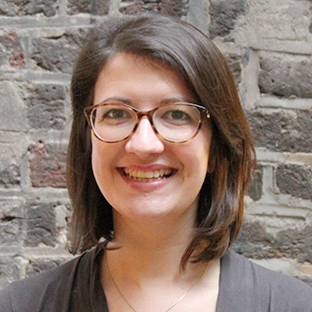New RSA report finds that young people are giving more back to society than adults might expect. However, we need to create more youth social action opportunities that benefit young people as well as the communities they help. This is especially true for those from the most disadvantaged backgrounds.
Last year, the RSA and the Centre for Real World Learning at the University of Winchester set out to explore the relationship between creative self-efficacy and social action, asking ‘do creative adolescents hold the key to developing flourishing communities’? Our research, supported by the Templeton Religion Trust, shows that adolescents’ desire to help others is significantly higher than adults give them credit for, but that they might not always get opportunities to participate in the types of social action that are of maximum benefit to them and their communities.
What do we mean by creativity?
It’s important to start by saying that the RSA comes at ‘creativity’ from a particular direction. As RSA director of education, Julian Astle, says in the foreword to this report, we are interested in ‘the idea that all of us, if given the opportunity, are capable of living creative lives in which we are able to shape our own futures’. This is reflected in our mission to ensure that everyone has the skills, resources, opportunities and confidence to turn their ideas into reality.
Young people’s desire to give back
Young people certainly have a strong desire to give back. Polling commissioned for the project finds that 68% of young people have participated in volunteering or other forms of social action, and an even greater number (84%) want to help others. A barrier for many seems to be their confidence that they can have a social impact, with only 52% believing that they can make a positive difference in their communities.
The confidence gap
We argue that one reason for this lack of confidence may be the way young people are viewed by adults. A representative sample of UK adults surveyed earlier this year most commonly selected ‘selfish’, ‘lazy’ and ‘anti-social’ as terms to describe young people today, with less than 4 percent choosing ‘selfless’. If young people internalise pernicious stereotypes such as these, it could lead them to conform to such beliefs (a phenomenon called ‘stereotype threat’).
Interestingly though, young people who considered themselves creative seemed to have greater levels of immunity to such a threat. They were around twice as likely as their peers to believe that they can make a difference.
The relationship between creativity and social action
We found that this mutually-reinforcing relationship between social action and creativity is particularly strong for social action where young people have the opportunity to:
-
identify the problem they want to address
-
come up with their own solutions
-
lead the response to the problem
-
reflect on the impact they achieved
When these conditions are in place, we find that the activities benefit both the community and the young people themselves as they further develop the attitudes and skills needed to make a positive difference in the world. Our research finds that the opportunity to engage in the sort of social action that delivers this ‘double benefit’ are particularly important for young people from the most disadvantaged backgrounds, who may not get the same chances for personal development in other parts of their lives.
Lack of “double benefit” opportunities
There are far from enough of these types of opportunities around. Currently, less than a quarter of young people who participate in social action have the chance to select the problem they want to solve.
In light of these findings, and the Local Government Association’s recent statement on the low take-up of the National Citizen Service (with as few as 4% of eligible young people participating in some areas), the RSA is interested in how to make sure the types of social action opportunities that most engage young people and support their development are made more widely available.
To that end, the RSA and the University of Winchester’s Centre for Real World Learning will be running a series of workshops throughout the Autumn with young people and representatives from schools, government and the third sector.
Join us
We believe strongly that all young people should have high levels of agency within the social action they do. If you would like to be part of our work to explore how to make this a reality, please get in touch with Sam Grinsted on sam.grinsted@rsa.org.uk
Read the report Teenagency: how young people are creating a better world (1.2MB)
Read the Teenagency literature review (1.1MB)

Join the discussion
Comments
Please login to post a comment or reply
Don't have an account? Click here to register.
Great article. After spending many years developing Social Action Projects and founding Inspire Women Oldham; I am about to embark on a Young Women's Changemaker Project in Oldham with the aim of co-developing projects that make a difference to the lives of other young people. Taking the same asset based approach I did with Inspire Women Oldham; Young Women will become the designers; developers and facilitators of the project. It is absolutely a project I would loved to have had as a young woman; maybe my "not good enough girl" would not have taken so long to switch off!